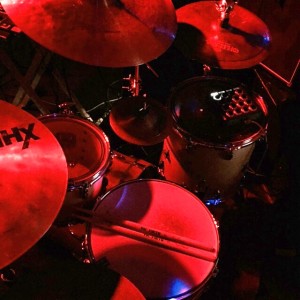Jojo Mayer is onto a concept I have been wrestling with my whole creative life: the space between the the limitations of the inevitable flexibility of the human drummer in a world dominated by not just digital music but digital rhythm, and conversely the inflexibility of digital rhythm programing. What interests and inspires me as the next step in modern drums in all music, recorded and performed live, is not the either/or of “the space between zero and one” but the interplay of the purely digital sequencer and the inescapable humanity of the human drummer. This is what producers like J Dilla and drummers likeQuestlove and a newer generation such as Chris Davebegan to explore in Hip-Hop production. The machine cannot effectively replace the primal human rhythm. The human cannot physically replicate the digital perfection (or more creatively important; precise and repeatable imperfection) of the drum sequencer. However, the push and pull of the interplay between the two is a third way, the next way. It is this “groove” that dominates the best of the unique 21’st century relationship between humanity’s oldest musical instrument and our newest. A listener doesn’t need to understand it technically any more than they knew how to play Gene Krupa’s jungle beat in “Sing, Sing, Sing” or The Surfaris “Wipeout”, but they FEEL it when they hear it. JoJo Mayer is not quite there for me personally as he strikes me as still a drummer interpreting the rhythmic complexity of a particular style of sample based drum programming; namely mid-nineties “Drum and Bass” or “Jungle”. (He explains how he came to this well in his own Ted Talk).This is probably why he is largely known as a “drummers drummer” and not someone who has risen in the wider electronic music circles as have some others such as KJ Sawka for example. As a child I hated the early use of drum machines replacing “real” drummers in pop music with a typical bland feel and clunky sound. Perhaps naively I saw it as just a bad way to get out of having to: a) spend the time and money to hire and record a real drummer, and b) giving the producer or songwriter who was inexperienced in what makes a drum beat “groove” the ability to take a hands-on approach to do it themselves. This certainly has come to fruition with the majority of pop music production, aided by the far better and more affordable sequencing and sampling technology sitting in our laptops today. My youthful naiveté however gave way with the magic created when drummers started working with machines, aided heavily by the ultra-important Akai MPC series of all-in-one sampler/sequencers and now amazing software/hardware integrations like Ableton Live. To be sure, the survival of the “studio drummer” is in as much peril as I feared, but the survival lies in the evolution of the drummer playing with, replicating, and infusing a true hybrid of rhythm between the sequencer and the most complex computer of all: the human brain. The best part is, despite conventional wisdom of the wider music listening audience, they crave this human element in the drums. The music listening public almost always understand the importance of the drum part of music they like. Ask any non-musical fan what is it about a particular song they are feeling and they will inevitably say “I like the beat”. One may not know it until it is experienced first hand but if you watch a live hip-hop show where one group performs their songs with a DJ and the next has some form of live band with a real drummer, you can always see the crowd feeling it, even if their main focus is still on the MC’s and singers. Much like Isaac Asimov believed the future of robotics lied more in the fusing of technology and the organic human species as opposed to A.I. world domination, so too lies the future of the drummer in modern music.
Leave a Reply
You must be logged in to post a comment.






